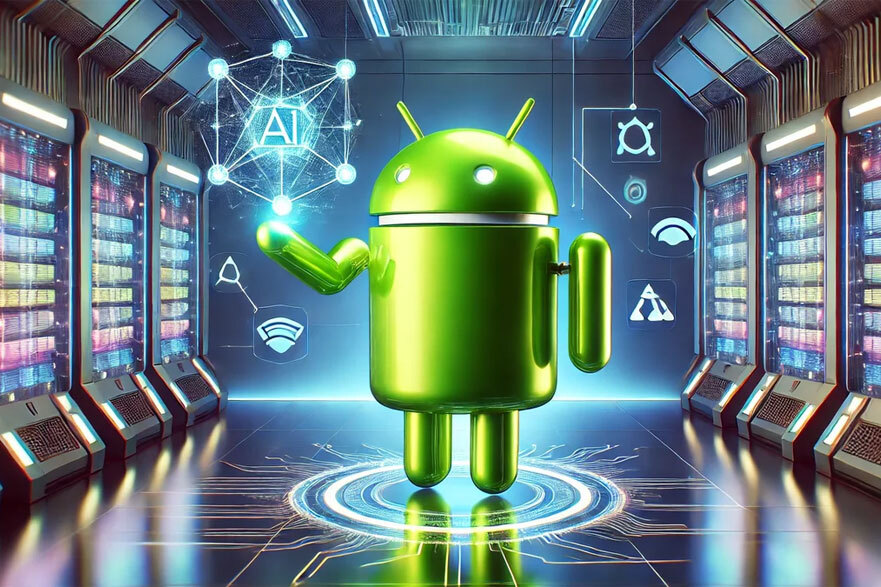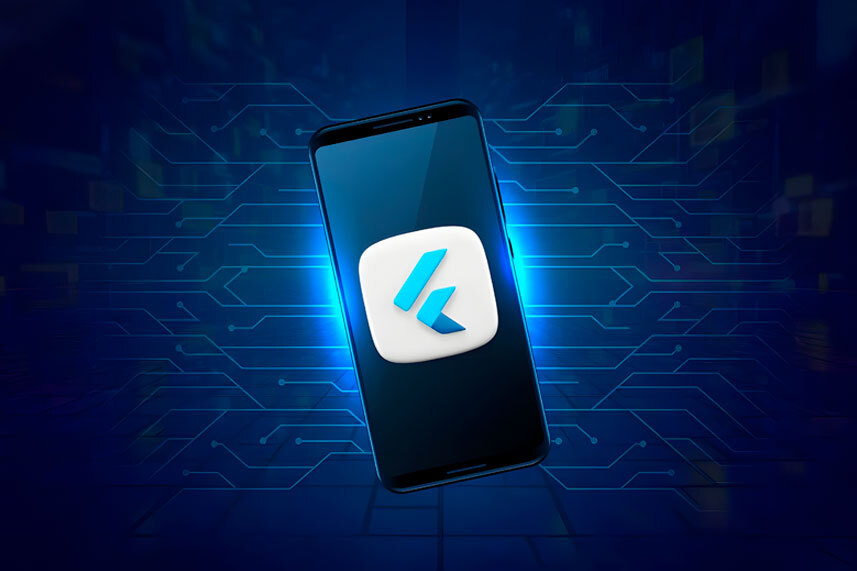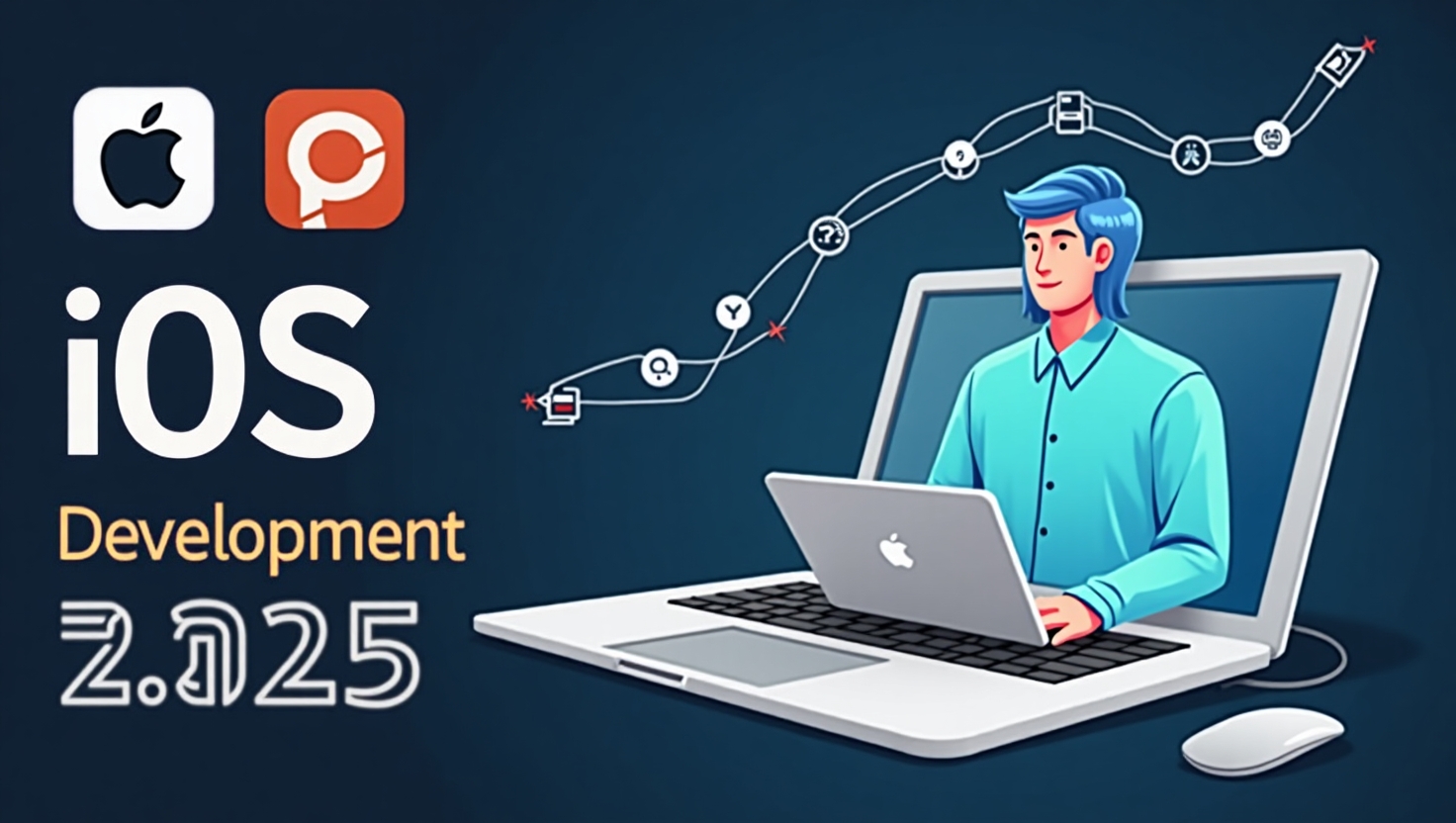Android App Development in 2025: What You Actually Need to Know
1. Getting Into Android Development
What Exactly Is Android Development?
Look, building Android apps isn’t rocket science, but it’s not exactly easy either. You’re basically writing software that runs on those little computers everyone carries around – phones, tablets, even smart TVs and cars these days.
Here’s the thing though – you can’t just write code like you would for a desktop program and expect it to work. Mobile is different. Your users might be on a crappy 3G connection while riding the bus, or their phone might be down to 5% battery. You’ve got to think about all that stuff.
Most people start with something simple. Maybe a tip calculator or a to-do list. Nothing fancy. But once you get the hang of it, you realize Android can handle some pretty sophisticated stuff. I mean, look at apps like Spotify or Google Maps – those are incredibly complex pieces of software.
Why Should You Care About Android in 2025?
Here’s a number that’ll blow your mind: Android is running on almost 3 billion devices right now. That’s not a typo. Three. Billion. When you put your app on Google Play, you’re potentially reaching more people than any medium in human history.
And yeah, everyone always talks about how iOS users spend more money per person. That’s true. But when you’ve got that many Android users, even small conversion rates add up to serious money.
Plus, Google isn’t slowing down their investment in Android. If anything, they’re doubling down. Android Studio keeps getting better, the documentation is actually readable now (trust me, it wasn’t always), and there are more learning resources than you could consume in a lifetime.
Oh, and Android isn’t just phones anymore. Same skills, different screens – tablets, TVs, cars, watches. Learn Android development once, and you’ve got options.
2. A Quick History Lesson (That’s Actually Interesting)
How Android Started (Spoiler: Not for Phones)
This is kind of funny – Android wasn’t originally meant for phones at all. Andy Rubin and his crew back in 2003 were trying to build software for digital cameras. Digital cameras! Can you imagine?
Google bought the whole company in 2005 for $50 million. Probably the best $50 million they ever spent, considering Android is now worth… well, let’s just say a lot more than that.
The first Android phone was the T-Mobile G1 in 2008. Honestly, it was pretty ugly compared to the iPhone. But it had a physical keyboard and could actually run multiple apps at once, which the iPhone couldn’t do yet. Sometimes being ugly but functional wins.
Those early versions were rough. Android 1.0 would crash if you looked at it wrong. But that’s how these things go – you ship something that barely works, then you fix it as you go.
When Android Got Serious
Android 4.0 (Ice Cream Sandwich) in 2011 was when things changed. Google basically said “okay, enough with the ugly” and designed something that didn’t make your eyes bleed. The Holo design language was their first real attempt at making Android apps look… well, good.
Then came Material Design in 2014 with Android 5.0. This wasn’t just about pretty colors and animations (though it had those). Google created a whole design philosophy that actually made sense. Other companies started copying it, which is usually a good sign you’re onto something.
The technical stuff matters too. Switching from Dalvik to ART runtime made apps faster. Adding runtime permissions made them more secure. Each version fixed real problems that developers and users actually cared about.
3. What Makes Android Development Different Now
Kotlin Changed Everything
Google made Kotlin the preferred language in 2019, and honestly, it’s about time. If you’ve ever written Java, you know how much typing is involved. Kotlin does the same stuff with way less code.
The null safety thing alone is worth the switch. In Java, NullPointerExceptions are like that friend who shows up uninvited and ruins your party. Kotlin forces you to handle null cases upfront, so your app crashes less and your users hate you less.
Data classes are brilliant. Instead of writing 50 lines of boilerplate just to create a simple object, you write one line. Kotlin generates all the boring stuff automatically.
And coroutines? They make background tasks actually enjoyable to write. No more callback hell, no more wrestling with AsyncTasks. Just clean, readable code that does what you expect.
Jetpack Compose Is Pretty Revolutionary
Compose completely flips UI development on its head. Instead of designing layouts in XML and then trying to make them work with your code, you just describe your UI with code. Sounds weird, works great.
The old way was painful. Create XML, find views by ID, manually update them when data changes. Miss one update somewhere and your UI shows stale data. Compose handles all that automatically.
Performance is better too because it’s smart about what actually needs to be redrawn. The old view system would redraw everything even if nothing changed.
Architecture Actually Matters Now
Google’s Architecture Components solve problems that used to keep developers up at night. Before these existed, every team invented their own solutions for basic stuff like surviving screen rotations.
ViewModels are probably the most important piece. They keep your business logic separate from your UI. When users rotate their phone, the ViewModel survives while the UI gets recreated. No more lost form data, no more repeated network requests.
LiveData and StateFlow provide reactive data streams. Your data changes, your UI updates. Automatically. It’s like magic, except it actually works reliably.
4. Where Android Apps Actually Get Used
Business Apps (The Boring but Profitable Stuff)
Everyone talks about consumer apps, but business apps are where a lot of developers actually make their money. Companies need mobile solutions for everything, and they’re willing to pay for them.
CRM apps are huge. Sales teams need to access customer data, update deals, log meetings while they’re out of the office. These apps sync with systems like Salesforce, so the data stays consistent everywhere.
Field service apps serve industries like HVAC, plumbing, telecom. Technicians can view work orders, access manuals, capture photos, update job statuses without driving back to the office. These apps can literally save companies thousands of dollars in time and gas.
E-commerce (Where the Money Is)
E-commerce apps are incredibly competitive because small improvements in conversion rates translate to big revenue increases. Every millisecond of loading time matters, every extra tap in checkout costs sales.
Recommendation engines are getting scary good. Apps track everything – what you browse, what you buy, what you put in your cart but don’t purchase. Machine learning uses all this data to suggest stuff you actually want.
Payment processing has to be perfect. Users expect to save payment methods, complete purchases with their fingerprint, get immediate confirmation. Any friction kills sales.
Healthcare (High Stakes, High Rewards)
Healthcare apps operate under different rules because people’s health is involved. The standards are higher, the regulations are stricter, but the impact can be life-changing.
Telemedicine exploded during COVID and it’s not going away. Apps need secure video calls, digital prescriptions, appointment scheduling. HIPAA compliance isn’t optional – mess this up and you’re facing serious legal problems.
Medication reminder apps seem simple but they’re actually complex. Users need flexible scheduling, family notifications, drug interaction warnings. Get these features wrong and someone could get seriously hurt.
Entertainment (The Fun Stuff)
Entertainment apps are fun to build but incredibly competitive. You’re fighting for people’s attention against every other app on their phone.
Mobile games range from simple puzzle games to complex experiences that rival console games. The successful ones balance engaging gameplay with monetization that doesn’t feel predatory.
Streaming apps have to handle variable network conditions, offline downloads, multiple user profiles. Technical performance directly impacts user experience – buffering kills engagement instantly.
5. Why Choose Android Development
It’s Open and Flexible
Android being open source gives you freedoms that closed platforms can’t match. You can examine the source code, understand how everything works, even contribute improvements back.
No licensing fees, no mandatory hardware purchases. Download Android Studio and start building. Compare that to platforms requiring expensive hardware or ongoing subscriptions.
You can integrate deeply with the system in ways other platforms don’t allow. This enables more powerful apps that work seamlessly with the user’s device.
The Market Is Massive
71% global market share means your app can reach most smartphone users worldwide. Not just rich countries – Android dominates in emerging markets where phones are often people’s primary computer.
Device diversity extends beyond phones. The same skills work for tablets, TVs, cars, watches, even some refrigerators. One skillset, many opportunities.
Google Play reaches 190+ countries without separate business relationships or localization for each market. The distribution infrastructure already exists.
It’s Cost-Effective
Getting started costs basically nothing. Free tools, extensive documentation, abundant learning resources. You can learn Android development without significant upfront investment.
Open source libraries reduce development time and costs. Instead of building everything from scratch, leverage existing solutions for common functionality.
The developer talent pool is large and diverse. Android developers are easier to find and typically cost less than specialists for niche platforms.
6. The Challenges You’ll Face
Device Fragmentation Is Real
Android runs on thousands of different devices with different specs, screen sizes, manufacturer customizations. This creates opportunities but also testing nightmares.
Hardware varies dramatically. Different processors, memory amounts, sensors, cameras. Your app needs to handle missing features gracefully and perform well on limited hardware.
Android version fragmentation means supporting multiple platform versions simultaneously. New features might not be available on older devices that users still actively use.
Manufacturer skins change how Android behaves. Samsung’s One UI, Xiaomi’s MIUI – they modify everything from appearance to system behaviors your app might depend on.
Testing becomes exponentially complex when you consider all possible combinations. Cloud testing services help, but comprehensive testing remains challenging and expensive.
Security Isn’t Optional
Security threats constantly evolve. Malware, data breaches, privacy violations can destroy user trust and get your app removed from stores.
Encryption is required for data in transit, at rest, and in memory. Implementing proper encryption without killing performance requires careful planning.
Permission handling got complex with runtime permissions. Users can grant or revoke permissions anytime, so your app must handle these changes without crashing.
Regulatory compliance varies by region. GDPR, CCPA, HIPAA impose specific requirements on data collection and processing.
Performance Across Different Hardware
Android devices range from budget phones with 2GB RAM to flagships with 12GB+. Your app needs to work acceptably everywhere while taking advantage of better hardware when available.
Memory management becomes critical on low-end devices. Aggressive garbage collection, careful bitmap handling, efficient caching – these aren’t optional optimizations.
Battery optimization affects ratings and retention. Apps that drain batteries get uninstalled. Background processing limitations require rethinking how apps work when not visible.
7. Android vs The Competition
Android vs iOS
Development environments differ significantly. Android Studio runs anywhere, Xcode requires macOS. This affects team composition and hardware costs.
User behavior patterns vary. iOS users typically spend more per person, Android users provide larger absolute numbers globally.
App store processes work differently. Google Play has automated review for faster publishing, Apple’s manual review catches more policy violations but takes longer.
Android vs Cross-Platform
Cross-platform frameworks like React Native and Flutter can reduce costs when targeting multiple platforms simultaneously by sharing code.
Performance trade-offs exist. Native Android typically provides optimal performance, especially for graphics-intensive or deeply integrated apps.
Platform-specific features often require native code anyway. Complex integrations and new platform features frequently need platform-specific implementation.
8. Emerging Tech and Android
Machine Learning Goes Mobile
TensorFlow Lite makes running ML models on devices practical. Models can be compressed and optimized for mobile while maintaining acceptable accuracy.
ML Kit provides pre-trained models for common tasks like text recognition, barcode scanning, face detection. These work offline and don’t require ML expertise.
Edge computing advantages include reduced latency, improved privacy, offline functionality. Mobile ML is particularly valuable for real-time applications.
Augmented Reality Gets Accessible
ARCore makes AR development accessible without specialized graphics programming knowledge.
Motion tracking enables digital objects to stay positioned correctly as users move their devices. This works in real-time without external markers.
Environmental understanding lets apps detect surfaces and lighting conditions. Digital content can interact realistically with real environments.
Blockchain Meets Mobile
Blockchain integration enables apps to interact with decentralized networks while providing user-friendly mobile interfaces.
Cryptocurrency wallet functionality requires secure key management and transaction signing. Security implementation needs careful handling of private keys.
DeFi protocol integration allows mobile participation in decentralized finance – lending, borrowing, trading through user-friendly interfaces.
9. Getting Started (For Real This Time)
Learn the Fundamentals
Activity lifecycle understanding is crucial because Android destroys and recreates app components to manage memory. Apps that don’t handle this properly lose user data.
Fragment management enables flexible UIs that adapt to different screens. Fragments are complex but essential for professional apps.
Intent system lets apps communicate with each other and the system. Understanding intents enables integrated experiences.
Master the Languages
Kotlin features like null safety, data classes, extension functions significantly improve productivity and code quality compared to Java.
Java compatibility remains important for existing projects and libraries. Understanding both languages enables working with mixed codebases.
Coroutines replace complex threading code with readable sequential code for background operations.
Get Comfortable with the Tools
Android Studio mastery includes project structure, build systems, debugging, profiling. Efficient tool usage significantly impacts productivity.
SDK management involves understanding API levels, compatibility, target versions to support diverse devices appropriately.
Emulator usage for testing includes creating virtual devices and using features like location simulation and network throttling.
Learning Resources That Actually Help
Official Google documentation provides authoritative information about APIs and best practices. This should be your primary reference.
Online courses from Udacity, Coursera, Udemy offer structured learning with hands-on projects that build practical skills.
Community resources like Stack Overflow, Reddit, Discord provide platforms for getting help and sharing knowledge.
Open source projects on GitHub demonstrate real-world patterns and provide contribution opportunities.
10. Wrapping Up
Android’s position as the dominant mobile platform makes it an essential skill for anyone serious about mobile development. With nearly 3 billion active devices, it represents the largest computing platform in history.
The platform’s openness encourages innovation while providing access to global markets. This creates opportunities for developers of all backgrounds and experience levels.
Google’s continued investment in tools and capabilities ensures Android remains relevant as technology evolves. Regular updates introduce new features while maintaining backward compatibility.
Looking ahead, emerging technologies like AI, AR, and blockchain create new possibilities for Android applications. Cross-platform improvements reduce development costs while maintaining performance.
The global market continues expanding, particularly in emerging economies. Developers who understand diverse market needs will find significant opportunities for growth and impact.
Getting started in Android development has never been more accessible, with free tools, extensive resources, and a supportive community. The investment in learning pays dividends in career opportunities and the potential to reach billions of users worldwide








